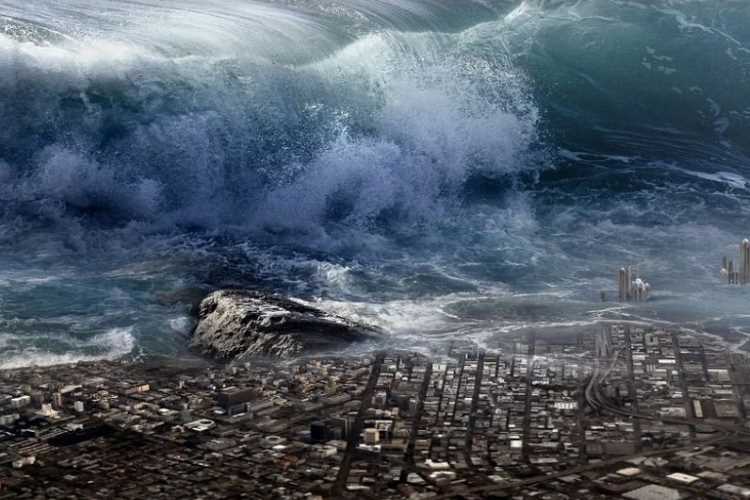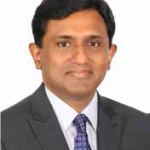
November 5, the UN-designated World Tsunami Awareness Day, reminds us of the need for a renewed push for disaster risk reduction efforts. The fundamental principles of the global partnership for disaster risk reduction are increasingly under threat. The multilateral partnership for disaster risk reduction is increasingly being reduced to bilateral engagement riddled with narrow geopolitical interests.
The tsunami of 2004 was caused by one of the worst undersea earthquakes in the recent history. It led to widespread destruction of property, lives and livelihood. The Andaman and Nicobar Islands were badly hit, and the reconstruction of the infrastructure of the island is an example of rapid reconstruction of tsunami-affected communities and the role of state in post-tsunami reconstruction.
READ I SDG agenda a pipe dream without sustainable peace, disarmament
Risk reduction will be crucial to the efforts to deliver the Sustainable Development Goals, UN Secretary-General António Guterres has said. He urged governments, local authorities and the construction industry to pursue risk-informed development and to invest in resilience.
Tsunamis are rare events, but can be catastrophic. In the past 100 years, 58 tsunamis have claimed more than 260,000 lives at an average of 4,600 lives per disaster, surpassing all other natural disasters. The highest number of deaths was in the Indian Ocean tsunami of December 2004. It caused an estimated 227,000 fatalities in 14 countries, with Indonesia, Sri Lanka, India and Thailand the hardest-hit.
Three weeks after the Tsunami, the international community came together at Kobe in Japan. The governments adopted the 10-year Hyogo Framework for Action, the first comprehensive global agreement on disaster risk reduction. They also created the Indian Ocean Tsunami Warning and Mitigation System, with scores of seismographic and sea-level monitoring stations and disseminates alerts to national tsunami information centres.
READ I Atmanirbhar Bharat a non-starter without an MSME surge
In December 2015, the UN General Assembly designated November 5 as World Tsunami Awareness Day. The date for the annual celebration was chosen in honour of the Japanese story of “Inamura-no-hi”, meaning the “burning of the rice sheaves”. During an 1854 earthquake, a farmer saw the tide receding, a sign of a looming tsunami. He set fire to his entire harvest to warn the villagers, who fled to high ground. Afterwards, he built an embankment and planted trees as a buffer against future waves.
The UN General Assembly has called on all countries, international bodies and civil society to observe the day, to raise tsunami awareness and share innovative approaches to risk reduction. It also asked the UN Office for Disaster Risk Reduction (UNISDR) to facilitate the observance of World Tsunami Awareness Day in collaboration with the rest of the United Nations system.
By the year 2030, an estimated 50 per cent of the world’s population will live in coastal areas exposed to flooding, storms and tsunamis. Rapid urbanization, increasing population movement to coastal urban centres and growing tourism in tsunami-prone regions are putting ever-more people at risk. Such social transitions make risk-reduction a critical factor in the world’s ability to achieve Sustainable Development Goals.
READ I Delhi smog: How fair is it to blame stubble burning by farmers of Punjab, Haryana
Substantial reductions in disaster mortality is a primary goal of the Sendai Framework, the 15-year international agreement adopted in March 2015 to succeed the Hyogo Framework, the first significant global agreement on disaster risk reduction. The Sendai Framework for Disaster Risk Reduction 2015-2030 outlines seven clear targets and four priorities for action to prevent new and reduce existing disaster risks. The Four priorities are:
- Understanding disaster risk;
- Strengthening risk governance to manage disaster risk;
- Investing in disaster reduction for resilience and;
- Enhancing disaster preparedness for effective response, and to build back better in recovery, rehabilitation and reconstruction.
The Sendai Framework aims to achieve a substantial reduction of disaster risk and losses in lives, livelihoods and health and the economic, physical, social, cultural and environmental assets of persons, businesses, communities and countries over the next 15 years. Today the global community is left with only 10 years to reach the target.
READ I Boon or bane? Universal basic income is not a poverty eradication tool
The framework was adopted at the Third UN World Conference on Disaster Risk Reduction in Sendai, Japan on March 18, 2015. The World Tsunami Awareness Day is an appropriate time to remind us about the guiding principles of the Sendai Framework, which call to the:
- The primary responsibility of states to prevent and reduce disaster risk, including through cooperation
- Shared responsibility between central government and national authorities, sectors and stakeholders as appropriate to national circumstances
- Protection of persons and their assets while promoting and protecting all human rights including the right to development
- Engagement from all of society
- Full engagement of all State institutions of an executive and legislative nature at national and local levels
- Empowerment of local authorities and communities through resources, incentives and decision-making responsibilities as appropriate
- Decision-making to be inclusive and risk-informed while using a multi-hazard approach
- The coherence of disaster risk reduction and sustainable development policies, plans, practices and mechanisms, across different sectors
- Accounting of local and specific characteristics of disaster risks when determining measures to reduce risk
- Addressing underlying risk factors cost-effectively through investment versus relying primarily on post disaster response and recovery
- Build Back Better» for preventing the creation of, and reducing existing, disaster risk
- The quality of global partnership and international cooperation to be significant, meaningful and strong
- Support from developed countries and partners to developing countries to be tailored according to needs and priorities as identified by them.
READ I Infrastructure status, priority lending to education hold key
However, most of the Sendai Framework and its principles are under threat. Unless local and global civic and political actions are not in place, the global resolve may be eroded. The primary responsibility of states to prevent and reduce disaster risk, including through cooperation needs to be part of the national political accountability frame. Civic action needs to remind all the stakeholders on the shared responsibility between the central government and national authorities. Protection of persons, their assets, protecting human rights, including the right to development remains the core principle of disaster relief operations.
Full engagement from all of society and state institutions, including the executive and legislative wing at the national and local levels remains a fundamental principle. Today minimal opportunities to encourage local action and efforts for empowerment of local authorities and communities in decision-making, and to be involved in accounting of local and specific characteristics of disaster risks when determining measures to reduce risk.
READ I Future perfect: Life after the fourth industrial revolution
The idea of “Build Back Better” for preventing the creation of, and reducing existing, disaster risk still needs legislative and regulatory oversight. The fundamental Sendai principle; the need for significant global partnership and international cooperation is, particularly under threat. The Support from developed countries and partners to developing countries are increasingly linked to trade and security concerns not necessarily tailored to the needs and priorities as identified by the local communities.
The 2020 World Tsunami Awareness Day is structured as a 30-day campaign with three key events focused on global target of the Sendai Framework. The framework calls to substantially increase the number of countries with national and local disaster risk reduction strategies by 2020 with a specific focus on two key components essential to the setup and effective maintenance of risk reduction strategies and their adoption by vulnerable communities. Scientific expertise, indigenous knowledge and memory, resilient infrastructure, early warning systems and education are critical to saving people and protecting their assets against tsunami risk in the future.
(Dr Joe Thomas is Associate Dean at the Faculty of Sustainability Studies, MIT WPU Campus, Kothrud, Pune.)
Dr Joe Thomas is Global Public Health Chair at Sustainable Policy Solutions Foundation, a policy think tank based in New Delhi. He is also Professor of Public Health at Institute of Health and Management, Victoria, Australia. Opinions expressed in this article are personal.

